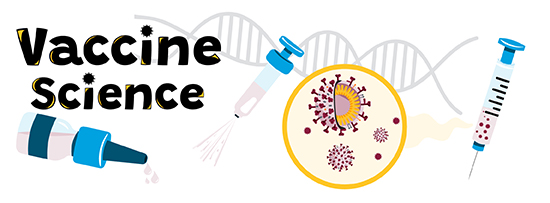How vaccines are made

Mystery stories can be exciting to read. There are puzzles to be solved, clues to be uncovered, and often a race against time to catch the villain before something terrible happens. Sometimes the detectives can be stumped by a clue and need help from other experts to figure out a particularly difficult problem.
Designing a vaccine is often very similar to solving a mystery. When trying to fight a dangerous microbe, scientists and researchers study it and try to develop a way to train the body’s immune system to fight it off. That way, if the pathogen tries to invade the body again, the body will know how to beat it. However, to make a vaccine, many steps need to take place to ensure that the vaccine works and is safe to use. During this process, scientists work with other experts to make sure that the vaccine is developed properly and is thoroughly tested before making it to the doctor’s office. Even once the vaccine is approved, the monitoring for safety continues.

Whether a pathogen is new and has just been discovered (like with the virus that causes COVID-19), or it has been around for a long time, the first step is to understand the biology of the virus. With viruses that are well-studied, researchers might use clues from experiments to understand how it gets into our cells to figure out how to fight it. f a pathogen is new, scientists will compare the new pathogen to a database of known pathogens. This is like matching the fingerprints of a suspect to a police database. That way, scientists can tell whether the pathogen is a variation of something that has affected humans before.
If a new virus is closely related to another known pathogen, then sometimes we have a head start on understanding how the pathogen works. If the pathogen has never been seen before, then scientists do experiments to learn more about it. Once data about the pathogen has been collected, scientists can start designing a vaccine to protect humans.
Deciding which type of vaccine to make
The first step in making a vaccine is deciding which type of vaccine to use. There are many different kinds of vaccines, but they all have the same goal: to show a person’s immune system what the pathogen looks like so that the body can prepare a defense before the real pathogen arrives. Some of the types of vaccines that can be used are as follows:
Live-attenuated vaccines:
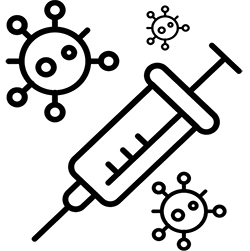
This type of vaccine uses a weakened (or attenuated) version of the live pathogen to cause an immune response. Because it is weakened, it will not make healthy people sick. Instead, it allows the immune system to mount a defense against the pathogen. Live-attenuated vaccines give your immune system the strongest training, so you usually only need to be vaccinated once (rather than needing “boosters”). This type of vaccine is used to protect against smallpox, chickenpox, measles, and yellow fever. However, because the pathogen is alive, some individuals with very weak immune systems cannot take this type of vaccine as their immune systems are not strong enough to fight the attenuated pathogen. So, these individuals must get another type of vaccine or rely on herd immunity to stay safe from the pathogen.
Inactivated vaccines:
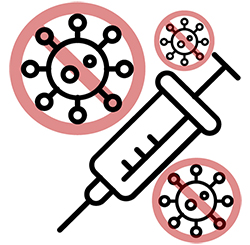
Inactivated vaccines do not contain live pathogen. Instead, the pathogens are cultured in a lab environment, then inactivated (or killed) by heat or certain chemicals. Even though the pathogen is dead, making it non-infectious, the immune system will still try to fight it. (The immune system is very picky about what it lets into the body.) Once the immune system figures out how to fight the dead virus, it will also know how to fight the live virus. However, because the pathogen is inactivated, multiple doses (“booster shots”) are usually needed to train the body properly. Two examples of inactivated vaccines are the rabies vaccine and the hepatitis A vaccine.
Subunit vaccines:
In a subunit vaccine, only a portion of the pathogen is given to the body. Usually, this portion is a protein that is found on the surface of the pathogen. You may have heard the phrase “don’t judge a book by its cover,” but this is exactly what we want the body to do in this case.
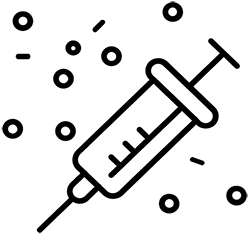
Researchers often use portions from the outside of the pathogen to train the body to recognize it in case the live pathogen ever infects the person. Because this type of vaccine doesn’t have any live pathogen, multiple doses or booster shots might be needed to fully train the body. Some examples of subunit vaccines are the tetanus, hepatitis B, and human papillomavirus (HPV) vaccines.
A variation of subunit vaccines is “polysaccharide vaccines”. Polysaccharides are special sugar structures that are on the outside of some pathogens. Because they are displayed on the outside, they can be used to identify the pathogen. Polysaccharide vaccines are available for Salmonella Typhi, meningococcal disease, and pneumococcal disease.
Recombinant vaccines:
Recombinant vaccines are created through the use of recombinant DNA. DNA, which is found in all living cells, contains a great deal of information about the cell including the instructions for how to make all the cell’s proteins. Scientists can “recombine” or take different pieces of DNA and join them together to make a new piece of DNA. This process is called “genetic engineering,” as scientists are engineering or modifying the genes from a particular organism.

One way to think about genetic engineering is to imagine playing with LEGO® bricks. We can take LEGO® bricks, build a model, then take it apart and connect it with new bricks to make a brand-new model. In a similar way, scientists use special techniques to cut different pieces of DNA and recombine it to make a new piece of DNA that contains the instructions to build a vaccine. In vaccine design, scientists frequently use genetic engineering to design vaccines and to produce them. The HPV vaccine is an excellent example of a recombinant vaccine.
A particular type of recombinant vaccine is a DNA vaccine in which the DNA instructions for producing a part of the pathogen are delivered to a person. In this type of vaccine, the person’s body then makes small pieces of the pathogen. Then, the immune system can study it so that it is prepared in case it ever encounters the real pathogen.
Toxoid vaccine:
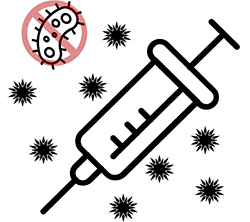
This type of vaccine doesn’t contain the pathogen itself. Instead, it directs the immune response to a toxin that the pathogen produces. Certain types of bacteria or other germs make toxic products which can be deadly. By recognizing these toxins, the immune system can keep the body safe from the dangerous effects of the toxin. Some examples of toxins produced by pathogens are tetanus toxin and diphtheria toxin. Vaccines for these toxins have saved millions of lives. In fact, deaths from tetanus have declined more than 99% in the United States since 1947. And in the 1930s, diphtheria was a leading cause of death in children in some countries like England.
https://www.vaccines.gov/basics/types
https://www.historyofvaccines.org/content/articles/different-types-vaccines
https://www.niaid.nih.gov/research/vaccine-types
https://www.cdc.gov/vaccines/pubs/pinkbook/downloads/prinvac.pdf
Read more about: Vaccine science
Bibliographic details:
- Article: Designing vaccines
- Author(s): Dr. Biology
- Publisher: Arizona State University School of Life Sciences Ask A Biologist
- Site name: ASU - Ask A Biologist
- Date published: 16 Nov, 2020
- Date accessed:
- Link: https://askabiologist.asu.edu/vaccine-design
APA Style
Dr. Biology. (Mon, 11/16/2020 - 14:21). Designing vaccines. ASU - Ask A Biologist. Retrieved from https://askabiologist.asu.edu/vaccine-design
Chicago Manual of Style
Dr. Biology. "Designing vaccines". ASU - Ask A Biologist. 16 Nov 2020. https://askabiologist.asu.edu/vaccine-design
Dr. Biology. "Designing vaccines". ASU - Ask A Biologist. 16 Nov 2020. ASU - Ask A Biologist, Web. https://askabiologist.asu.edu/vaccine-design
MLA 2017 Style
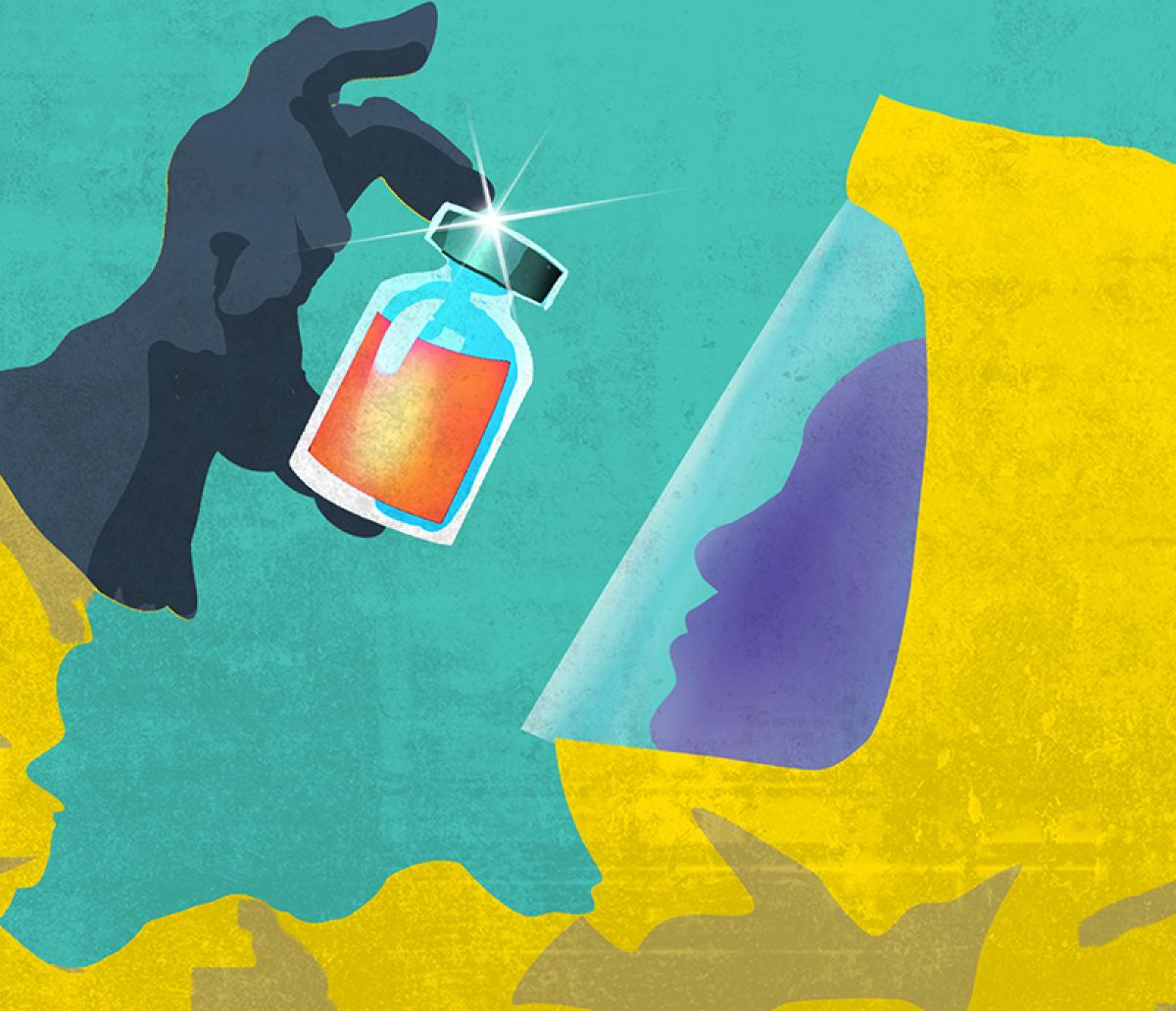
Be Part of
Ask A Biologist
By volunteering, or simply sending us feedback on the site. Scientists, teachers, writers, illustrators, and translators are all important to the program. If you are interested in helping with the website we have a Volunteers page to get the process started.

